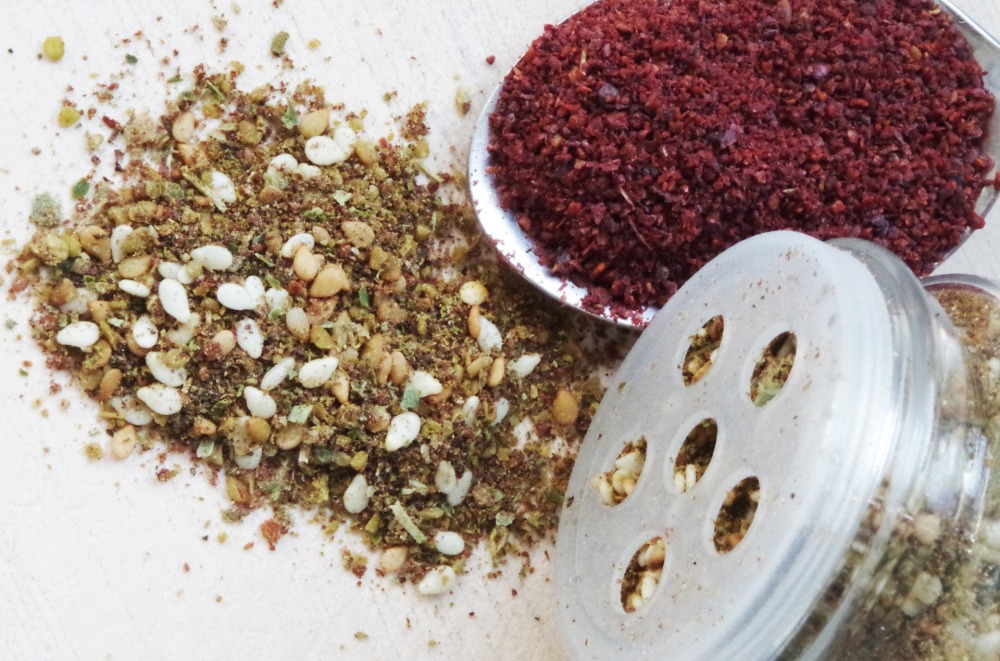
Like every national cuisine, Israeli cooking is made up of big and small ingredients, some with a strong presence that get lots of fanfare, others that are subtle and more in the shadows. Early on in my awakening to Israeli cuisine, thanks to Galya, I was introduced to a marvellous spice blend I had never previously seen or heard about. It’s called za’atar and Galya would open my eyes and taste buds to its incredible presence in many Israeli dishes she makes.
The one I enjoy the most is ironically by far the simplest — za’atar mixed with olive oil on a plate to form a paste-like texture in which you dip bread or pita for a mouth-watering treat. For those who abstain from eating on Yom Kippur, it’s a wonderful way to break the fast after 25 hours before consuming more substantial food.
“One of the strongest memories I have from my childhood in Jerusalem is walking to my late grandmother’s apartment in the Nachalot neighborhood at the conclusion of Yom Kippur and breaking the fast with dark bread dipped in olive oil and za’atar,” says Galya. “She always insisted that it helped make for a better digestion after the fast. For years, my family and I have adopted this custom, not only on Yom Kippur but often during Friday dinners or for brunches. The taste and the act of dipping food into this incredible mix make it so inviting. Like many Israelis, I often use za’atar for seasoning and love sprinkling it on lots of things for the taste it adds and its visual appeal.”

From http://www.thespruce.com which includes a video on how to make za’atar
Used extensively in Israeli — and other Middle East — cooking, often as a table condiment, za’atar dates back 2,000 years to biblical times, originating from a plant of the same name. While the Middle East is home to many regional variations, the Israeli one is most commonly a mix of dried herbs, hyssop, toasted sesame seeds and ground sumac or thyme and often salt, without any of the actual za’atar herb because the za’atar plant is a protected species. It’s usually dark green, almost dark brown, with a deep, tangy, woodsy taste.
Since I’ve known Galya, she’s always been a champion of za’atar, using it in multiple ways to enhance the taste of her Israeli cooking. I enjoy watching her as she so naturally adds a dash of this quintessential Middle Eastern herb mix to all manner of dishes. It’s something I will forever associate with Galya in a most positive context.
Here’s one of Galya’s za’atar-based recipes, among many:
Za’atar With Labane (strained yogurt cheese)
Ingredients
1 liter organic 3% yogurt (the higher the yogurt’s fat percentage, the thicker the labene and the greater the calories)
3 Tsp of juice from fresh lemons
1/2 Tsp kosher salt
For visual appeal:
1/ 3 cup of fresh mint, very finely chopped
Seeds of 1 pomegranate
3 – 4 Tsp of extra virgin olive oil
3 – 4 Tsp of za’atar
Directions:
- Mix the yogurt together with the lemon juice and salt
- Line a large bowl with 2 layers of cheesecloth, leaving enough material to hang over the sides
- Pour in yogurt mixture
- Tie the ends cheesecloth together and secure it with a string
- Leave to drain in the fridge for 3 – 4 days
Decoration:
- Spread the cheese on a large round flat plate (Galya recommends using Moroccan plates as their color adds a dramatic motif to the dish)
- Spread at the edge of the plate the fresh mint and the pomegranate seeds
- Mix the olive oil with the za’atar and spread it generously on the plate
You can serve this dish along with finely chopped Israeli salad and fresh pita to be dunked in labane, fruity olive oil and za’atar

Im hungry now!!!
LikeLike
I love za’atar. Thanks for sharing the recipe.
LikeLike
Thanks Donna. Much appreciated… Robert
LikeLike
Wow. So yummy.
LikeLike